Evolutionary Ecology
The department of Evolutionary Ecology gathers complementary skills in behavioural ecology, population dynamics, population biology, community ecology, and methodology (statistics and modelling). The research done in the department aims at studying how animal species evolve in a changing world by understanding the causes of the evolution of traits, adaptations and interactions. For that, we consider different levels of organization from individuals to populations and communities. Because organisms cannot be considered isolated from other biotic factors, we consider pathogens but also competing species within communities.
We study how individuals adapt to their environments that are largely impacted by anthropic pressures, and how life history traits and behaviour evolve in response to these pressures. Although we mainly focus on phenotype, we more and more consider the mechanistic link between the genotype and the phenotype. We develop the theoretical framework of our discipline through a conceptual and modeling approach. In parallel, we test hypotheses that arise from theoretical predictions through experimental, comparative and observational approaches on different biological models (insects, birds, mammals). Experimental approaches are developed in the laboratory (insect model) and in natura (bird, insect and mammal models). Observational and comparative research is mainly concerned with vertebrates. Our approaches are also, and increasingly, interested in the mechanisms of adaptive responses. In addition to the classical approaches of demographic analysis and trait change, methods of ecophysiology, chemical ecology and molecular biology are used.
Our department hosts several long-term studies of wild populations of different species. These long-term studies offer a valuable way to understand how biotic and abiotic factors affect individuals’ life history traits, and the functioning of populations in natura. Five populations of mammalian species are thus monitored for several years (more than 40 years on roe deer, 30 on Alpine marmots, 25 years on cats, 16 years on zebras, and 20 years on impala). Two of our study sites (La Sassière in Vanoise National Park (Alpine marmots) and Hwange National Park) have been certified as “Site d’Etude en Ecologie Globale” (SEEG), and two (ZA “Hwange” and ZA “Antarctic and sub-Antarctic”) were certified as “Zone Atelier” by the CNRS.
The department of Evolutionary ecology is also largely involved in training activities. Lastly, we also have strong socio-economic relationships. Indeed, because we address questions of major societal interest (global warming, public health) we tightly collaborate with socio-economic partners (Office Français de la Biodiversité, Vanoise National Park, Hwange National Park in Zimbabwe, Office National des Forêts, etc.) and participate to general public and media events.
Publications
Display of 991 to 1020 publications on 2449 in total
Multicontinental community phylogenetics of avian mixed-species flocks reveal the role of the stability of associations and of kleptoparasitism
Ecography . 40 ( 11 ) : 1267-1273
DOI: 10.1111/ecog.02574
Journal article
see the publicationPeriodic continuous-time movement models uncover behavioral changes of wild canids along anthropization gradients
Ecological monographs . 87 ( 3 ) : 442-456
DOI: 10.1002/ecm.1260
Journal article
see the publicationIncreasing Spring temperature favors oak seed production in temperate areas
EGU General Assembly 2017 . 19 : np
Poster
see the publicationInteractions between demography and environmental effects are important determinants of population dynamics
Science Advances . 3 ( 2 ) : e1602298
Journal article
see the publicationReproductive allocation in pulsed-resource environments: a comparative study in two populations of wild boar
Oecologia . 183 ( 4 ) : 1065--1076
Journal article
see the publicationRaisonner l'utilisation des légumineuses ligneuses pour réhabiliter des sols dégradés en milieu méditerranéen et tropical
Innovations Agronomiques . 60 : 125-131
Journal article
see the publicationCombined effect of temperature and ammonia on molecular response and survival of the freshwater crustacean Gammarus pulex
Ecotoxicology and Environmental Safety . 137 : 42-48
Journal article
see the publicationResponse to Comment on "Robust Fit of Toxicokinetic-Toxicodynamic Models Using Prior Knowledge Contained in the Design of Survival Toxicity Tests
Environmental Science and Technology . 51 : 8202-8203
Journal article
see the publicationRobust Fit of Toxicokinetic-Toxicodynamic Models Using Prior Knowledge Contained in the Design of Survival Toxicity Tests
Environmental Science and Technology . 51 : 4038-4045
Journal article
see the publicationThe invasive pest Drosophila suzukii uses trans-generational medication to resist parasitoid attack
Scientific Reports . 7 ( 1 )
DOI: 10.1038/srep43696
Journal article
see the publicationAdaptations to different habitats in sexual and asexual populations of parasitoid wasps: a meta-analysis
PeerJ . 5 : e3699
DOI: 10.7717/peerj.3699
Journal article
see the publicationImmunosenescence patterns differ between populations but not between sexes in a long-lived mammal
Scientific Reports . 7 ( 1 )
Journal article
see the publicationThe ‘Evo-Demo’ Implications of Condition-Dependent Mortality
Trends in Ecology & Evolution . 32 ( 12 ) : 909-921
Journal article
see the publicationReproductive senescence: new perspectives in the wild
Biological Reviews . 92 ( 4 ) : 2182-2199
DOI: 10.1111/brv.12328
Journal article
see the publicationLife tables and Leslie matrices for mammalian cohorts in different paleobiological contexts during the Pleistocene
TaphonomieS . 9782813002419 : 477-497
Book chapter
see the publicationSenescence in Mammalian Life History Traits
The Evolution of Senescence in the Tree of Life . 978-1-139-93986-7 : 126-155
Book chapter
see the publicationLineage-specific duplication of amphioxus retinoic acid degrading enzymes (CYP26) resulted in sub-functionalization of patterning and homeostatic roles
BMC Evolutionary Biology . 17 ( 1 ) : 24
Journal article
see the publicationMorphometric variations at an ecological scale: Seasonal and local variations in feral and commensal house mice
Mammalian Biology: Zeitschrift für Säugetierkunde . 87 : 1-12
Journal article
see the publicationNegative phenotypic and genetic correlation between natal dispersal propensity and nest-defence behaviour in a wild bird
Biology Letters . 13 ( 7 ) : 20170236
Journal article
see the publicationNatal dispersers pay a lifetime cost to increased reproductive effort in a wild bird population
Proceedings of the Royal Society B: Biological Sciences . 284 : 20162445
Journal article
see the publicationadegraphics: An S4 Lattice-Based Package for the Representation of Multivariate Data
The R Journal . 9 ( 2 ) : 198-212
DOI: 10.32614/RJ-2017-042
Journal article
see the publicationA critical issue in model-based inference for studying trait-based community assembly and a solution
PeerJ . 5 : e2885
DOI: 10.7717/peerj.2885
Journal article
see the publicationInferring the timing of territoriality and rut in male roe deer from movements? Some preliminary results - and new perspectives
6. EURODEER meeting .
Conference paper
see the publicationLife histories and conservation of long-lived reptiles, an illustration with the American crocodile ( Crocodylus acutus )
Journal of Animal Ecology . 86 ( 5 ) : 1102 - 1113
Journal article
see the publicationHabitat selection by a large herbivore at multiple spatial and temporal scales is primarily governed by food resources
Ecography . 40 ( 8 ) : 1014 - 1027
DOI: 10.1111/ecog.02152
Journal article
see the publicationDo nothing” as a disease management strategy for pestivirus infection in Pyrenean Chamois?
33. International Union of Game Biologists (IUGB) .
Conference paper
see the publicationDesigning cost-effective capture-recapture surveys for improving the monitoring of survival in bird populations
Biological Conservation . 214 : 233-241
Journal article
see the publicationManaging cold tolerance and quality of mass-produced Drosophila suzukii flies to facilitate the application of biocontrol through incompatible and sterile insect techniques
Third FAO–IAEA International Conference on Area-wide Management of Insect Pests .
Poster
see the publicationDrosophila suzukii et la pourriture acide du raisin
Revue Française d'Oenologie . ( 285 ) : 31
Journal article
see the publicationESTIMATING INDIVIDUAL FITNESS IN THE WILD USING CAPTURE-RECAPTURE DATA
Population Ecology .
Journal article
see the publication
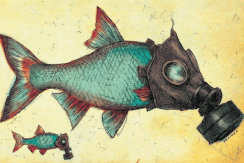
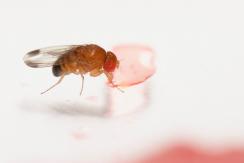
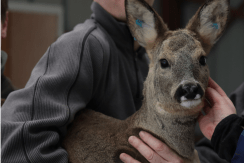
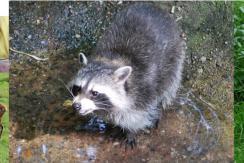
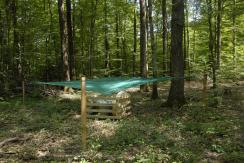
You also, comment on this article